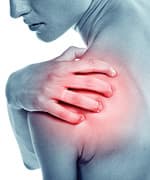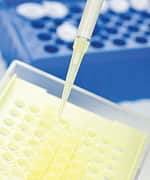Life Extension Magazine®
More than 52 million Americans suffer from some form of arthritis.1 Conventional medical wisdom has long held that rheumatoid arthritis results from an autoimmune attack on joints, while osteoarthritis was thought to result from age-related “wear-and-tear.” For the first time, a team of researchers2 at Stanford University has demonstrated that this is not true! It turns out that osteoarthritis is accompanied by the same pathological, pro-inflammatory immune factors involved in rheumatoid arthritis. Even more compelling was their finding that, if treatment is initiated before symptoms manifest, osteoarthritis may be entirely prevented. Unfortunately, the list of available drugs to combat autoimmune disorders—including long-term treatment with corticosteroids like prednisone—is notoriously limited and comes with life-threatening complications, including obesity and diabetes. The exciting news is a novel intervention has been identified that safely regulates the immune system to protect aging joint tissue from autoimmune attacks. In this article, you will learn about UC-II®, a form of undenatured type II collagen. Its unique molecular characteristics prevent immune cells’ overreaction to proteins normally found in cartilage and joint tissue that lead to pain and stiffness in both rheumatoid and osteoarthritis.3-7 In multiple clinical trials using this proprietary collagen formulation, scientists at Harvard8 have been able to achieve relief of arthritic symptoms, with some patients experiencing complete remission!9 You will also learn how UC-II®’s mode of action may be synergistically enhanced when combined with Boswellia serrata and two other joint-renewing nutrients. The Stanford team’s discovery of the autoimmune link between osteoarthritis and rheumatoid arthritis was first presented in late 2011. A group of 25 scientists concluded that the development of osteoarthritis is in great part driven by low-grade inflammatory processes.2,10 Specifically, the researchers discovered that the body launches an orchestrated, powerful attack on the synovial joints via signaling proteins normally used to fight infections. This autoimmune response, they reported, plays a key role in osteoarthritis onset.2 Synovial joints are the most common joint types in the human body. They contain soft-tissue cushioning in addition to cartilage, along with synovial fluid, a natural lubricant. Knees, hips, and shoulders are just a few of the commonly arthritic joints that fall into this category. What the Stanford team found was that low-grade inflammation is not merely an early symptom of osteoarthritic cartilage destruction in synovial joints—it is the trigger that causes it. The study also revealed that by targeting the autoimmune derangements that occur early on in the development of osteoarthritis, arthritis might be completely preventable. They went on to point out that drugs intended to inhibit the arthritic reaction (like corticosteroids) paradoxically compromise the immune system.2 It would be far safer, they reported, if a natural way to turn off the body’s abnormal response were available. Novel Method to Target the Pathologic Immune Response
These compelling new findings coincided with the development of a natural intervention shown to protect tissues in aging joints called undenatured type II collagen. Here’s how it works. Joints are lined with cartilage that both lubricates joints and absorbs physical impacts, preserving ease of motion and comfort. The bulk of the cartilage in your joints consists of collagen, a biomolecular protein critical to reducing friction and keeping joints youthful. Osteoarthritis and rheumatoid arthritis both involve the structural degradation and gradual destruction of cartilage in aging joints.7,11,12 Osteoarthritis was long thought to be a consequence of simple “wear- and-tear” on joints (and hence largely inevitable).7 Rheumatoid arthritis, on the other hand, was recognized as an inflammatory autoimmune disease that arises when the body mistakenly attacks its own tissues, in this case the joint linings and cartilage.7 We now know that both arise from pro-inflammatory immune factors. Intrinsic to this process is the mobilization of “killer” T-cells into the joints by exposed collagen within the synovial lining.7,8 Under normal conditions, collagen elicits no immune response. It is exposed collagen that immune cells mistakenly identify as invasive, foreign molecules.7 In response to the “threat,” inflammatory cytokines are released that draw in more “killer” T-cells.13 Those cells bombard exposed cartilage with toxic chemicals in order to destroy it, creating oxidative stress and further inflammation in the process. Over time, these continuous biomolecular insults erode and disintegrate the cartilage that lubricates and functions as a shock-absorber in joints. The resulting pain can become chronic and debilitating in lockstep with sensations of friction or grinding involved in joint movement. While less acute at rest, this pain is exacerbated by walking, standing, or any form of weight-bearing.14,15 Osteoarthritis sufferers often experience joint stiffness or immobility after periods of inactivity, for instance upon waking or after a long period of sitting.14 UC-II® Triggers Specific Oral Tolerance for Lasting Joint ReliefIn both osteoarthritis and rheumatoid arthritis, the chief cause of autoimmune response is exposed collagen and the ensuing attack by sensitized killer T-cells.7,16 Suppose an effective means of regulating killer T-cells before they encountered exposed collagen could be developed? This would “re-train” them to treat exposed collagen as a harmless substance and prevent joint degradation and destruction. In 2000, the first hint of just such an intervention emerged. A team of scientists at the University of Nebraska was surprised to find that chicken soup prevented the mobilization of immune system cells to sites of inflammation.17 Upon further analysis, it was not vegetables but a soluble component of the chicken broth itself that exerted this anti-inflammatory activity. The researchers believe that it was likely the collagen from chicken bones in the broth that was the source of this beneficial anti-inflammatory effect.
Owing to its particular molecular structure, the chicken-derived type II collagen in UC-II® acts as a kind of “reverse vaccine,” one that regulates the immune system so that it stops mobilizing attacks against proteins normally found in healthy joint cartilage. It does so by inducing what immunologists call specific oral tolerance—the desensitization of immune response to specific agents via an orally administered intervention. This is why UC-II® may be likened to a kind of oral vaccine that reverses T-cell attacks on exposed cartilage. Scientists at Harvard first studied the effects of UC-II® on human patients with rheumatoid arthritis, long established as an autoimmune disorder. In a randomized, double-blind trial of 60 patients, undenatured type II chicken collagen produced a significant decrease in the number of swollen and painful joints within 3 months, compared to the placebo group. In fact, 14% of patients achieved complete remission. No side effects were found.8 Later, a much larger study of 274 rheumatoid arthritis patients confirmed this finding, as did a study on patients with juvenile rheumatoid arthritis, a particularly aggressive form of this disease.18 Turning their attention to osteoarthritis, scientists tested undenatured type II chicken collagen on horses and dogs. They noted a reduction of 88% in measurable pain among horses given this formulation.16 In one study, moderately arthritic dogs given the undenatured collagen formulation were able to place more weight on sore limbs, and use them more naturally, relative to those given placebo, or those given chondroitin plus glucosamine.19 The gold standard of scientific evidence is a randomized, double-blind, clinical study on humans. In a study of this type involving 52 adult human volunteers with osteoarthritis, who had an average age of 59, scientists found that in just 90 days, undenatured type II chicken collagen produced “significant enhancement in daily activities suggesting an improvement in their quality of life.”14 In this trial, using the standardized WOMAC (Western Ontario McMaster Osteoarthritis Index) scale, scientists found that 40 mg a day of undenatured type II chicken collagen reduced osteoarthritis symptoms by 33% in 90 days. By comparison, the combination of 1,500 mg a day of glucosamine and 1,200 mg a day of chondroitin sulfate reduced WOMAC scores by only 14%.14 Pain scores on the visual analog scale (VAS) decreased 40% for the collagen group, while pain scores for the glucosamine/chondroitin group decreased just 15%.14 Finally, using the Lequesne’s functional index score—which measures pain during daily activities, such as walking—the study team found that undenatured type II chicken collagen reduced this score by 20%, while the combination of glucosamine and chondroitin lowered the score by only 6%. All results were observed in just 90 days.14 So scientific studies have established that a dosage of 40 mg a day of undenatured type II chicken collagen induces oral tolerance to exposed collagen—inhibiting the arthritic immune response that inflames joints, degrades cartilage and bone, and as a result, further inflames joints in a vicious and degenerative cycle.8,9,14,16,18,19
Neutralizing the Pro-inflammatory 5-LOX Enzyme
Incorporating a safe anti-inflammatory agent in a joint protection program may provide an additional layer of defense against arthritic damage and pain, by helping to eliminate the immune trigger. In traditional Indian medicine, the gum resin of Boswellia serrata is associated with alleviating inflammatory diseases such as arthritis. Double-blind, placebo-controlled studies have shown boswellia decreases swelling and pain in patients with osteoarthritis of the knee.20 Various compounds within boswellia exert an anti-inflammatory action that is different from most anti-inflammatory agents: they inhibit the pro-inflammatory enzyme 5-lipoxygenase or 5-LOX. A highly bioactive boswellia compound—called 3-O-acetyl-11-keto-b-boswellic acid, or AKBA—directly binds to and selectively inhibits 5-LOX.21,22 This prevents 5-LOX from facilitating the production of leukotriene, a pro-inflammatory compound that damages cartilage and joints. AKBA also reduces pro-inflammatory leukocyte elastase activity.21 The problem up to now has been limited bioavailability of AKBA following oral administration. Fortunately, researchers have developed a boswellia formulation with enhanced bioavailability. Scientists administering this patented boswellia compound to animals found that it increased the bioavailability of AKBA in the systemic circulation by 52%, compared with a standard boswellia extract.21 The researchers concluded that the AKBA-rich boswellia product “consistently…confers better anti-inflammatory efficacy,” and “provides more potential benefits in recovering articular cartilage damage… due to inflammatory insult in arthritis such as osteoarthritis or rheumatoid arthritis.”21 In a double-blind, randomized, placebo-controlled study on human patients with osteoarthritis, 100 mg of the patented AKBA-enriched boswellia extract inhibited the cartilage-degrading enzyme MMP-3, and exhibited an anti-inflammatory action that was superior to a standard boswellia extract. Benefits were seen as early in the 90-day study as 7 days. The journal-published report described the formulation as a “novel synergistic composition.”23 Additional Nutrients to Rebuild Aging JointsIn addition to inducing oral tolerance in the immune system, and blocking pro-inflammatory 5-LOX enzymes—it is important to support the structure of healthy joints. Two of these nutrients—glucosamine sulfate and a patented form of boron—round out an effective anti-arthritis program by protecting existing cartilage and synovial fluid in the joint, as well as providing nutritional support for healthy joint structure. Glucosamine
Glucosamine is a component of cartilage that has been shown to be joint-protective. While generally viewed as a partial treatment for osteoarthritis, research suggests it may also be effective against rheumatoid arthritis.24 Inflammatory cytokines are directly implicated in the development and progression of osteoarthritis. In the lab, researchers found that glucosamine produces a four-fold reduction in inflammatory cytokine-induced gene expression.25 In another lab study, glucosamine successfully inhibited a number of pro-inflammatory factors (nuclear factor-kappaB activity, prostaglandin E2, and the gene expression of COX-2) supporting its use “as a symptom- and structure-modifying drug in the treatment of [osteoarthritis].”26 Glucosamine was also found to prevent joint cartilage degradation in the lab, providing “further support for the use of glucosamine in treatment or prevention of cartilage loss.”27 Turning their attention to humans, scientists conducted a randomized, double-blind study of patients with osteoarthritis of the knee. They compared 1,500 mg a day of glucosamine to 1,200 mg a day of ibuprofen for two weeks for effectiveness and side effects. They concluded that glucosamine “is a selective drug for osteoarthritis, as effective on the symptoms of the disease as NSAIDs [non-steroidal anti-inflammatory drugs] but significantly better tolerated.”28 When scientists orally administered glucosamine to human osteoarthritis patients in therapeutic doses of 1,500 mg a day, they found it to be bioavailable both systemically and within the joints.29 Not all studies show that glucosamine by itself confers relief from osteoarthritis.30-33 These studies showing lack of efficacy strongly underscore the need for arthritis suffers to utilize a multi-modal approach. BoronThe trace element boron influences calcium and magnesium metabolism and can inhibit pro-inflammatory factors, while potentially helping to maintain bone growth and density.34-37 In a review of previous studies, scientists found that boron exerts favorable immunomodulatory effects on the inflammatory process, decreasing joint swelling and improving restricted movement. Boron was also found to inhibit lipoxygenase (LOX)—an enzyme that triggers the inflammatory cascade—and this inhibitory effect on LOX decreases levels of inflammatory leukotrienes.38 In a double-blind pilot study in people with severe osteoarthritis, scientists found that of those who started the trial, 50% of those taking boron improved; and of those completing the trial, 71% of those taking boron improved; but only 10% of those taking placebo improved. No side effects were observed.39 In another study, bone samples were taken from fracture patients and compared to samples from osteoarthritis patients and to control bone samples. Researchers found no differences between fracture and control bone samples, but samples of bone from areas adjacent to osteoarthritic joints showed reduced mineral content, including a lower level of boron. This may indicate that there is a more rapid turnover of bone in these afflicted joints, and that boron—used as a bone-building material—is quickly depleted.40 Scientists have now developed and patented a form of boron that is identical to that found in plants, making it highly bioavailable. A dose of just 1.5 mg of the patented form of boron may provide a key constituent for rebuilding the damaged bones and joints of osteoarthritis patients. Glucosamine and boron—two natural, joint-supporting nutrients—may be key supporting players for the beneficial effects of undenatured type II chicken collagen and the inflammation-blocking action of the patented, more absorbable form of Boswellia serrata. SummaryA team of Stanford researchers recently demonstrated that both rheumatoid and osteoarthritis are triggered by an abnormal immune response. Arthritis is traditionally treated with side effect–prone anti-inflammatory and immune-suppressing drugs. A unique compound has been developed that is capable of safely and naturally desensitizing the immune system so that it “learns” to stop launching the attacks on aging joints that cause arthritis pain and swelling. Through a pathway known as induced oral tolerance, undenatured type II chicken collagen retrains the immune system to correctly recognize exposed cartilage proteins as the body’s own tissues—instead of incorrectly seeing them as foreign microbes—thus preventing the inflammatory and destructive attack that causes osteoarthritic joint pain and stiffness. Supported by the anti-inflammatory action of a novel composition of AKBA-enriched Boswellia serrata—and further boosted by the joint-rebuilding nutrients, glucosamine sulfate and boron, 40 mg a day of undenatured type II chicken collagen may halt the abnormal immune process that strikes arthritis sufferers.
If you have any questions on the scientific content of this article, please call a Life Extension® Wellness Specialist at 1-866-864-3027. | ||||||||||||
| References | ||||||||||||
| 1. Available at: http://www.cdc.gov/nchs/fastats/arthrits.htm. Accessed November 15, 2011. 2. Wang Q, Rozelle AL, Lepus CM, et al. Identification of a central role for complement in osteoarthritis. Nat Med. 2011 Nov 6. 3. Min SY, Park KS, Cho ML, et al. Antigen-induced, tolerogenic CD11c+,CD11b+ dendritic cells are abundant in Peyer’s patches during the induction of oral tolerance to type II collagen and suppress experimental collagen induced arthritis. Arthritis Rheum. 2006 Mar;54(3):887-98. 4. Zhao W, Tong T, Wang L, et al. Chicken type II collagen induced immune tolerance of mesenteric lymph node lymphocytes by enhancing beta2-adrenergic receptor desensitization in rats with collagen-induced arthritis. Int Immunopharmacol. 2011 Jan;11(1):12-8. 5. Park KS, Park MJ, Cho ML, et al. Type II collagen oral tolerance; mechanism and role in collagen-induced arthritis and rheumatoid arthritis. Mod Rheumatol. 2009;19(6):581-9. 6. Zhu P, Li XY, Wang HK, et al. Oral administration of type-II collagen peptide 250-270 suppresses specific cellular and humoral immune response in collagen-induced arthritis. Clin Immunol. 2007 Jan;122(1):75-84. 7. Bagchi D, Misner B, Bagchi M, et al. Effects of orally administered undenatured type II collagen against arthritic inflammatory diseases: a mechanistic exploration. Int J Clin Pharmacol Res. 2002;22(3-4):101-10. 8. Trentham DE, Dynesius-Trentham RA, Orav EJ, et al. Effects of oral administration of type II collagen on rheumatoid arthritis. Science. 1993 Sep 24;261(5129):1727-30. 9. Barnett ML, Kremer JM, St Clair EW, et al. Treatment of rheumatoid arthritis with oral type II collagen. Results of a multicenter, double-blind, placebo-controlled trial. Arthritis Rheum. 1998 Feb;41(2):290-7. 10. Available at: http://med.stanford.edu/ism/2011/november/osteoarthritis.html. Accessed November 15, 2011. 11. Hashizume M, Mihara M. The roles of interleukin-6 in the pathogenesis of rheumatoid arthritis. Arthritis. 2011;2011:765624. 12. Heinegard D, Saxne T. The role of the cartilage matrix in osteoarthritis. Nat Rev Rheumatol. 2011 Jan;7(1):50-6 13. Cohen ES, Bodmer HC. Cytotoxic T lymphocytes recognize and lyse chondrocytes under inflammatory, but not non-inflammatory conditions. Immunology.2003 May;109(1):8-14. 14. Crowley DC, Lau FC, Sharma P, et al. Safety and efficacy of undenatured type II collagen in the treatment of osteoarthritis of the knee: a clinical trial. Int J Med Sci. 2009;6(6):312-21. 15. Recommendations for the medical management of osteoarthritis of the hip and knee: 2000 update. American College of Rheumatology Subcommittee on Osteoarthritis Guidelines. Arthritis Rheum. 2000 Sep;43(9):1905-15. 16. Gupta RC, Canerdy TD, Skaggs P, et al. Therapeutic efficacy of undenatured type-II collagen (UC-II®) in comparison to glucosamine and chondroitin in arthritic horses. J Vet Pharmacol Ther. 2009 Dec;32(6):577-84. 17. Rennard BO, Ertl RF, Gossman GL, Robbins RA, Rennard SI. Chicken soup inhibits neutrophil chemotaxis in vitro. Chest. 2000 Oct;118(4):1150-7. 18. Barnett ML, Kremer JM, St Clair EW, et al. Treatment of rheumatoid arthritis with oral type II collagen. Results of a multicenter, double-blind, placebo-controlled trial. Arthritis Rheum. 1998 Feb;41(2):290-7. 19. Gupta RC, Canerdy TD, Lindley J, et al. Comparative therapeutic efficacy and safety of type-II collagen (UC-II®), glucosamine and chondroitin in arthritic dogs: pain evaluation by ground force plate. J Anim Physiol Anim Nutr (Berl). 2011 May 30. 20. Kimmatkar N, Thawani V, Hingorani L, Khiyani R. Efficacy and tolerability of Boswellia serrata extract in treatment of osteoarthritis of knee—a randomized double blind placebo controlled trial. Phytomedicine. 2003 Jan;10(1):3-7. 21. Safayhi H, Rall B, Sailer ER, Ammon HP. Inhibition by boswellic acids of human leukocyte elastase. J Pharmacol Exp Ther. 1997 Apr;281(1):460-3. 22. Safayhi H, Sailer ER, Ammon HP. Mechanism of 5-lipoxygenase inhibition by acetyl-11-keto-beta-boswellic acid. Mol Pharmacol. 1995 Jun;47(6):1212-6. 23. Sengupta K, Krishnaraju AV, Vishal AA, et al. Comparative efficacy and tolerability of 5-Loxin and Aflapin against osteoarthritis of the knee: a double blind, randomized, placebo controlled clinical study. Int J Med Sci. 2010 Nov 1;7(6):366-77. 24. Nakamura H, Masuko K, Yudoh K, Kato T, Kamada T, Kawahara T. Effects of glucosamine administration on patients with rheumatoid arthritis. Rheumatol Int. 2007 Jan;27(3):213-8. 25. Imagawa K, de Andrés MC, Hashimoto K, et al. The epigenetic effect of glucosamine and a nuclear factor-kappa B (NF-kB) inhibitor on primary human chondrocytes--implications for osteoarthritis. Biochem Biophys Res Commun. 2011 Feb 18;405(3):362-7. 26. Largo R, Alvarez-Soria MA, Díez-Ortego I, et al. Glucosamine inhibits IL-1beta-induced NFkappaB activation in human osteoarthritic chondrocytes. Osteoarthritis Cartilage. 2003 Apr;11(4):290-8. 27. Fenton JI, Chlebek-Brown KA, Caron JP, Orth MW. Effect of glucosamine on interleukin-1-conditioned articular cartilage. Equine Vet J Suppl. 2002 Sep;(34):219-23. 28. Qiu GX, Gao SN, Giacovelli G, Rovati L, Setnikar I. Efficacy and safety of glucosamine sulfate versus ibuprofen in patients with knee osteoarthritis. Arzneimittelforschung. 1998 May;48(5):469-74. 29. Persiani S, Rotini R, Trisolino G, et al. Synovial and plasma glucosamine concentrations in osteoarthritic patients following oral crystalline glucosamine sulphate at therapeutic dose. Osteoarthritis Cartilage. 2007 Jul;15(7):764-72. 30. Berge HM, Gjelstad S, Furu K, Straand J. Use of glucosamine does not reduce the need for other pain-relieving drugs. Tidsskr Nor Laegeforen. 2010 Aug 12;130(15):1463-6. 31. No authors listed. A negative verdict for glucosamine and chondroitin supplements. Johns Hopkins Med Lett Health After 50. 2009 Feb;20(12):1-2. 32. Clegg DO, Reda DJ, Harris CL, et al. Glucosamine, chondroitin sulfate, and the two in combination for painful knee osteoarthritis. N Engl J Med. 2006 Feb 23;354(8):795-808. 33. Chard J, Dieppe P. Glucosamine for osteoarthritis: magic, hype, or confusion? It’s probably safe-but there’s no good evidence that it works. BMJ. 2001 Jun 16;322(7300):1439-40. 34. Armstrong TA, Spears JW, Crenshaw TD, Nielsen FH. Boron supplementation of a semipurified diet for weanling pigs improves feed efficiency and bone strength characteristics and alters plasma lipid metabolites. J Nutr. 2000 Oct;130(10):2575-81. 35. Meacham SL, Taper LJ, Volpe SL. Effects of boron supplementation on bone mineral density and dietary, blood, and urinary calcium, phosphorus, magnesium, and boron in female athletes. Environ Health Perspect. 1994 Nov;102(Suppl 7):79-82. 36. Naghii MR, Mofid M, Asgari AR, Hedayati M, Daneshpour MS. Comparative effects of daily and weekly boron supplementation on plasma steroid hormones and proinflammatory cytokines. J Trace Elem Med Biol. 2011 Jan;25(1):54-8 37. Nielsen FH. Biochemical and physiologic consequences of boron deprivation in humans. Environ Health Perspect. 1994 Nov;102 Suppl 7:59-63. 38. Hunt CD, Idso JP. Dietary boron as a physiological regulator of the normal inflammatory response: A review and current research progress. J Trace Elem Exp Med. 1999 Jul 19;12(3):221-33. 39. Travers RL, Rennie GC, Newnham RE: Boron and arthritis: the result of a double-blind pilot study. J Nutr Environ Med. 1990;1(2):127-32. 40. Helliwell TR, Kelly SA, Walsh HP, et al. Elemental analysis of femoral bone from patients with fractured neck of femur or osteoarthrosis. Bone. 1996 Feb;18(2):151-7. 41. Bagchi D, Misner B, Bagchi M, et al. Effects of orally administered undenatured type II collagen against arthritic inflammatory diseases: a mechanistic exploration. Int J Clin Pharmacol Res. 2002;22(3-4):101-10. 42. Cremer MA, Rosloniec EF, Kang AH. The cartilage collagens: a review of their structure, organization, and role in the pathogenesis of experimental arthritis in animals and in human rheumatic disease. J Mol Med (Berl). 1998 Mar;76(3-4):275-88. 43. Corthay A, Backlund J, Broddefalk J, et al. Epitope glycosylation plays a critical role for T cell recognition of type II collagen in collagen-induced arthritis. Eur J Immunol. 1998 Aug;28(8):2580-90. 44. Meyer O. Oral immunomodulation therapy in rheumatoid arthritis. Joint Bone Spine. 2000;67(5):384-92. 45. Min SY, Park KS, Cho ML, et al. Antigen-induced, tolerogenic CD11c+,CD11b+ dendritic cells are abundant in Peyer’s patches during the induction of oral tolerance to type II collagen and suppress experimental collagen-induced arthritis. Arthritis Rheum. 2006 Mar;54(3):887-98. 46. Weiner HL. Oral tolerance: immune mechanisms and treatment of autoimmune diseases. Immunol Today. 1997 Jul;18(7):335-43. 47. Zhu P, Li XY, Wang HK, et al. Oral administration of type-II collagen peptide 250-270 suppresses specific cellular and humoral immune response in collagen-induced arthritis. Clin Immunol. 2007 Jan;122(1):75-84. 48. Nagler-Anderson C, Bober LA, Robinson ME, Siskind GW, Thorbecke GJ. Suppression of type II collagen-induced arthritis by intragastric administration of soluble type II collagen. Proc Natl Acad Sci U S A. 1986 Oct;83(19):7443-6. 49. Zhao W, Tong T, Wang L, et al. Chicken type II collagen induced immune tolerance of mesenteric lymph node lymphocytes by enhancing beta2-adrenergic receptor desensitization in rats with collagen-induced arthritis. Int Immunopharmacol. 2011 Jan;11(1):12-8 50. J. Perng, MD. Email communication. October 16, 2007. |







